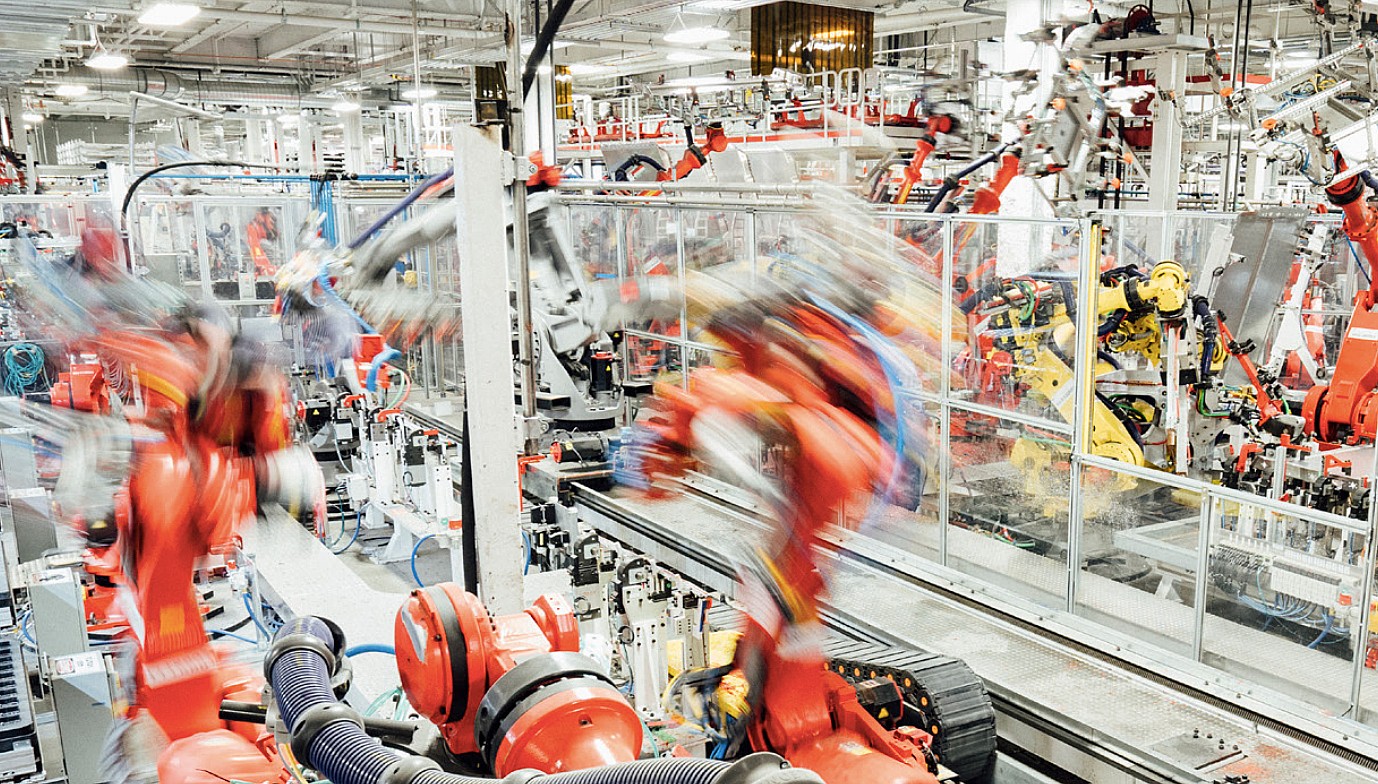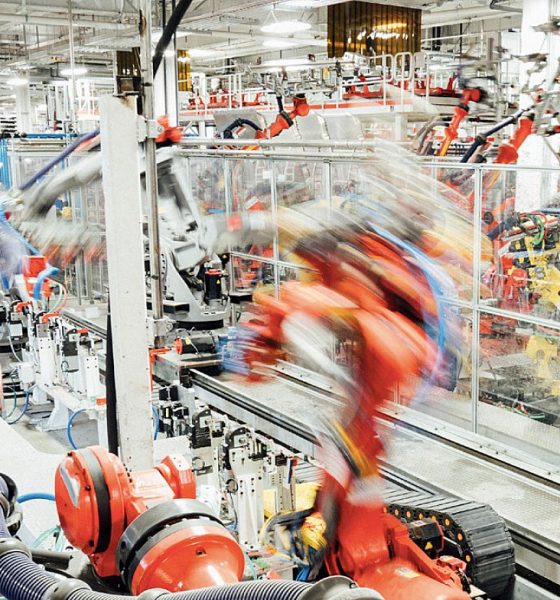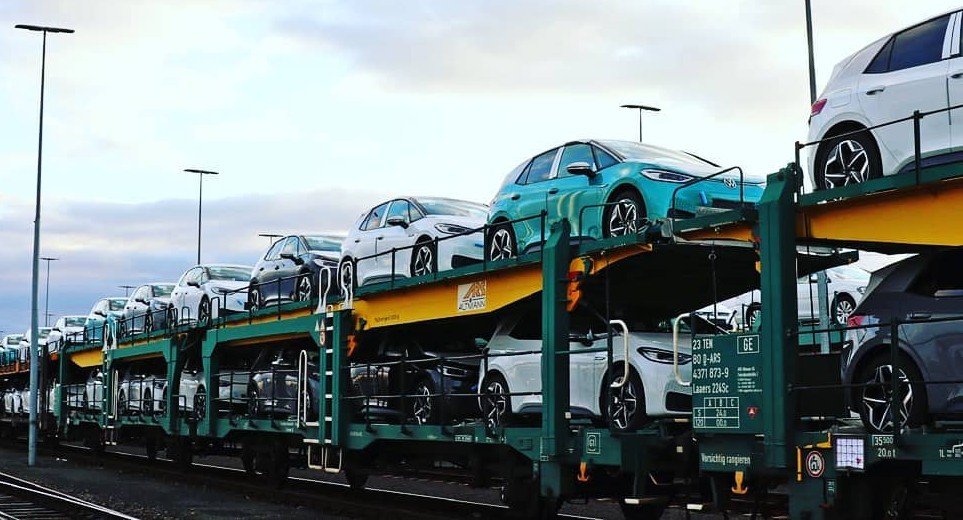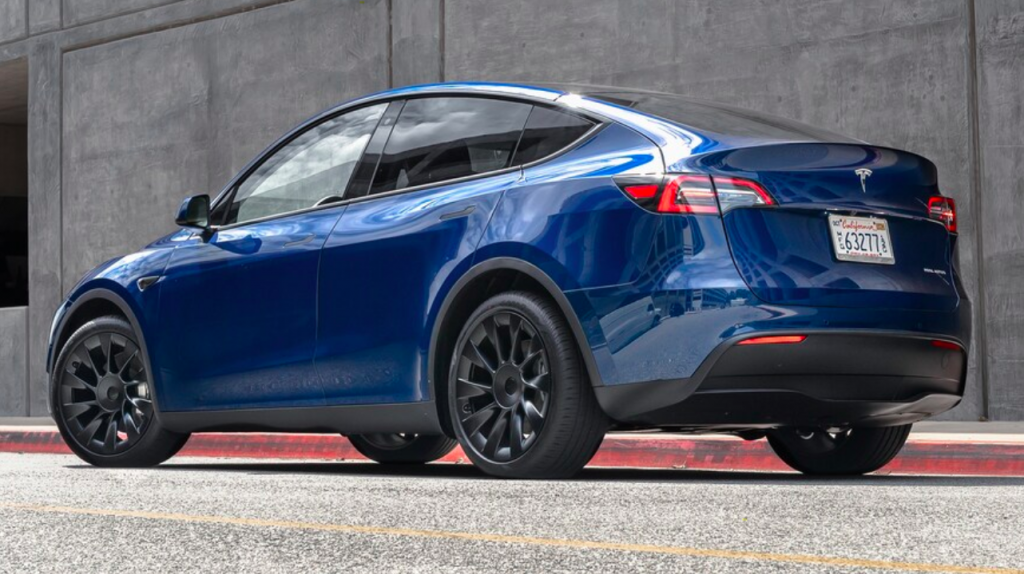

News
Tesla’s rivals from legacy auto are facing a day of reckoning due to the pandemic
In Volkswagen’s Zwickau plant in Germany, a storm seems to be brewing. The veteran automaker has put a lot of its cards on the ID.3, its upcoming all-electric hatchback. But with the pandemic still maintaining its hold on the global automotive market, things are starting to look a lot more challenging.
Volkswagen initially planned to produce the ID.3 en masse at the expansive facility. The Zwickau plant is expected to be one of the largest electric car factories in the globe, and it is poised to be a key factor in the German automaker’s attempt at closing the gap between itself and electric vehicle pioneer Tesla. Unfortunately for Volkswagen, the pandemic has thrown a proverbial wrench at its plans.
The effects of the COVID-19 virus will be felt for years to come, and the automotive sector will be among those that will likely take a massive hit. With the economic pressures of the pandemic, car buyers are expected to be more conservative about big ticket purchases. This could prove challenging for veteran automakers and their respective EV programs, as their electric lineup will likely hold a premium price over their more affordable gas-powered cars.

A premium price for electric vehicles will likely be a weight that legacy automakers would have to bear. With dropping oil prices, internal combustion cars could become more attractive to budget-conscious buyers. Tesla is pretty much immune to this, since the company only produces all-electric vehicles, and its cars are only getting more affordable. This was highlighted by the company’s recent decision to drop the price of its Model S, Model 3, and Model X, as well as its release of the Model Y.
In a recent statement to Bloomberg, Volkswagen has stated that when it comes to its shift to electric vehicles, the company has simply reached a point where there is no turning back. The pandemic has pretty much crushed demand for vehicles, and all-electric cars like the ID.3 are poised to enter uncharted territory. This was addressed by Thomas Ulbrich, who runs Volkswagen’s EV business. In a statement, he noted that ultimately, “we all have a historic task to accomplish to protect the health of our employees—and at the same time get business back on track responsibly.”
For VW, this means that the company has to push through with the ID.3 regardless of the existing challenges in the market. CEO Herbert Diess, an avid supporter of the electric car movement who has earned the respect of Tesla’s Elon Musk, hinted at this in previous comments. In a post last month on LinkedIn, Diess stated that he and his colleagues are still hard at work with the ID.3. “My new working week starts together with Thomas Ulbrich at the wheel of a Volkswagen ID.3 – our most important project to meet the European CO2-targets in 2020 and 2021. We are fighting hard to keep our timeline for the launches to come,” the CEO wrote.

Prior to the onset of the coronavirus, Volkswagen was poised to push the ID.3 as the first of its flagship electric vehicle line. But with the pandemic, things are poised for some big changes. The German automaker has already started adapting to these coming changes, and some seem to be partly inspired by younger carmakers such as Tesla. The company, for example, has decided to offer its ID.3 line online. Volkswagen has also started rolling out touchless test drives, just like Tesla in the United States and China.
But things will not be easy. The global automotive market will take a hit this year because of the pandemic, and some companies may end up in dire straits. French finance minister Bruno Le Maire has stated that Renault SA, the maker of the popular Zoe electric car, can “disappear” without state aid. Even Toyota, a company that is largely considered as an immovable pillar in the automotive segment, has warned that its profits will likely tumble to the lowest level in almost a decade.
For now, the best bet for automakers planning on releasing electric cars would be to release vehicles that provide what car buyers in the post pandemic would prefer: value and practicality. Tesla’s bet for this lies in the Model Y and the Model 3, as both cars are reasonably priced and offer the best that the EV industry has to offer. Hopefully, automakers like Volkswagen would be able to accomplish the same.

News
Tesla FSD fleet is nearing 7 billion total miles, including 2.5 billion city miles
As can be seen on Tesla’s official FSD webpage, vehicles equipped with the system have now navigated over 6.99 billion miles.

Tesla’s Full Self-Driving (Supervised) fleet is closing in on almost 7 billion total miles driven, as per data posted by the company on its official FSD webpage.
These figures hint at the massive scale of data fueling Tesla’s rapid FSD improvements, which have been quite notable as of late.
FSD mileage milestones
As can be seen on Tesla’s official FSD webpage, vehicles equipped with the system have now navigated over 6.99 billion miles. Tesla owner and avid FSD tester Whole Mars Catalog also shared a screenshot indicating that from the nearly 7 billion miles traveled by the FSD fleet, more than 2.5 billion miles were driven inside cities.
City miles are particularly valuable for complex urban scenarios like unprotected turns, pedestrian interactions, and traffic lights. This is also the difference-maker for FSD, as only complex solutions, such as Waymo’s self-driving taxis, operate similarly on inner-city streets. And even then, incidents such as the San Francisco blackouts have proven challenging for sensor-rich vehicles like Waymos.
Tesla’s data edge
Tesla has a number of advantages in the autonomous vehicle sector, one of which is the size of its fleet and the number of vehicles training FSD on real-world roads. Tesla’s nearly 7 billion FSD miles then allow the company to roll out updates that make its vehicles behave like they are being driven by experienced drivers, even if they are operating on their own.
So notable are Tesla’s improvements to FSD that NVIDIA Director of Robotics Jim Fan, after experiencing FSD v14, noted that the system is the first AI that passes what he described as a “Physical Turing Test.”
“Despite knowing exactly how robot learning works, I still find it magical watching the steering wheel turn by itself. First it feels surreal, next it becomes routine. Then, like the smartphone, taking it away actively hurts. This is how humanity gets rewired and glued to god-like technologies,” Fan wrote in a post on X.
News
Tesla starts showing how FSD will change lives in Europe
Local officials tested the system on narrow country roads and were impressed by FSD’s smooth, human-like driving, with some calling the service a game-changer for everyday life in areas that are far from urban centers.

Tesla has launched Europe’s first public shuttle service using Full Self-Driving (Supervised) in the rural Eifelkreis Bitburg-Prüm region of Germany, demonstrating how the technology can restore independence and mobility for people who struggle with limited transport options.
Local officials tested the system on narrow country roads and were impressed by FSD’s smooth, human-like driving, with some calling the service a game-changer for everyday life in areas that are far from urban centers.
Officials see real impact on rural residents
Arzfeld Mayor Johannes Kuhl and District Administrator Andreas Kruppert personally tested the Tesla shuttle service. This allowed them to see just how well FSD navigated winding lanes and rural roads confidently. Kruppert said, “Autonomous driving sounds like science fiction to many, but we simply see here that it works totally well in rural regions too.” Kuhl, for his part, also noted that FSD “feels like a very experienced driver.”
The pilot complements the area’s “Citizen Bus” program, which provides on-demand rides for elderly residents who can no longer drive themselves. Tesla Europe shared a video of a demonstration of the service, highlighting how FSD gives people their freedom back, even in places where public transport is not as prevalent.
What the Ministry for Economic Affairs and Transport says
Rhineland-Palatinate’s Minister Daniela Schmitt supported the project, praising the collaboration that made this “first of its kind in Europe” possible. As per the ministry, the rural rollout for the service shows FSD’s potential beyond major cities, and it delivers tangible benefits like grocery runs, doctor visits, and social connections for isolated residents.
“Reliable and flexible mobility is especially vital in rural areas. With the launch of a shuttle service using self-driving vehicles (FSD supervised) by Tesla in the Eifelkreis Bitburg-Prüm, an innovative pilot project is now getting underway that complements local community bus services. It is the first project of its kind in Europe.
“The result is a real gain for rural mobility: greater accessibility, more flexibility and tangible benefits for everyday life. A strong signal for innovation, cooperation and future-oriented mobility beyond urban centers,” the ministry wrote in a LinkedIn post.
News
Tesla China quietly posts Robotaxi-related job listing
Tesla China is currently seeking a Low Voltage Electrical Engineer to work on circuit board design for the company’s autonomous vehicles.

Tesla has posted a new job listing in Shanghai explicitly tied to its Robotaxi program, fueling speculation that the company is preparing to launch its dedicated autonomous ride-hailing service in China.
As noted in the listing, Tesla China is currently seeking a Low Voltage Electrical Engineer to work on circuit board design for the company’s autonomous vehicles.
Robotaxi-specific role
The listing, which was shared on social media platform X by industry watcher @tslaming, suggested that Tesla China is looking to fill the role urgently. The job listing itself specifically mentions that the person hired for the role will be working on the Low Voltage Hardware team, which would design the circuit boards that would serve as the nervous system of the Robotaxi.
Key tasks for the role, as indicated in the job listing, include collaboration with PCB layout, firmware, mechanical, program management, and validation teams, among other responsibilities. The role is based in Shanghai.
China Robotaxi launch
China represents a massive potential market for robotaxis, with its dense urban centers and supportive policies in select cities. Tesla has limited permission to roll out FSD in the country, though despite this, its vehicles have been hailed as among the best in the market when it comes to autonomous features. So far, at least, it appears that China supports Tesla’s FSD and Robotaxi rollout.
This was hinted at in November, when Tesla brought the Cybercab to the 8th China International Import Expo (CIIE) in Shanghai, marking the first time that the autonomous two-seater was brought to the Asia-Pacific region. The vehicle, despite not having a release date in China, received a significant amount of interest among the event’s attendees.








